Resident Crews of the International Space Station (ISS)
![]()
ISS: Expedition 50 |
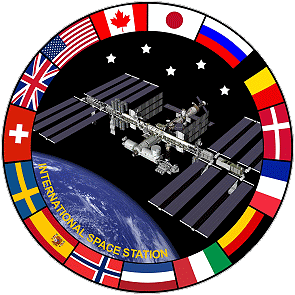 |
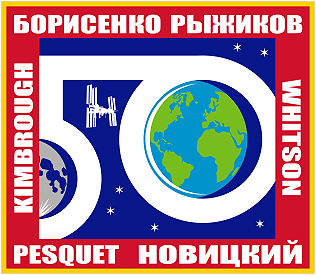 |
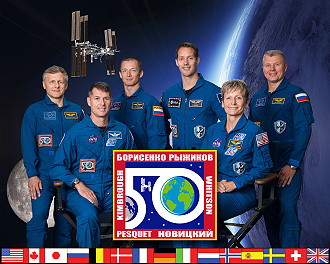 |
alternative crew photo |
|
alternative crew photo |
|
alternative crew photo |
|
alternative crew photo |
|
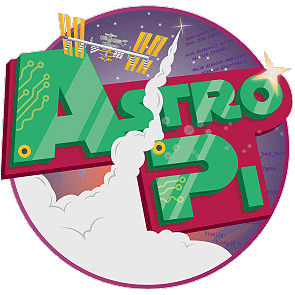 |
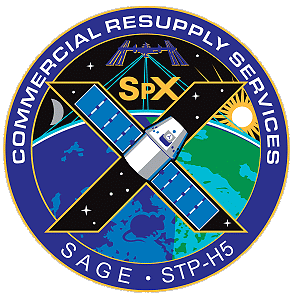 |
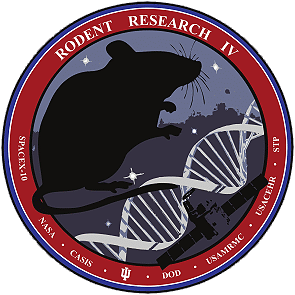 |
|
![]()
Crew, launch- and landing data
| No. | Nation | Surname | Given names | Position | Spacecraft (launch) |
Launch date |
Launch time |
Spacecraft (landing) |
Landing date |
Landing time |
Mission duration |
Orbits |
| 1 | Kimbrough | Robert Shane | ISS-CDR | Soyuz MS-02 | 19.10.2016 | 08:05:14.378 UTC | Soyuz MS-02 | 10.04.2017 | 11:20:21.6 UTC | * 173d 03h 15m 08s | 2694 | |
| 2 | Ryzhikov | Sergei Nikolaevich | Flight Engineer-1 | Soyuz MS-02 | 19.10.2016 | 08:05:14.378 UTC | Soyuz MS-02 | 10.04.2017 | 11:20:21.6 UTC | * 173d 03h 15m 08s | 2694 | |
| 3 | Borisenko | Andrei Ivanovich | Flight Engineer-2 | Soyuz MS-02 | 19.10.2016 | 08:05:14.378 UTC | Soyuz MS-02 | 10.04.2017 | 11:20:21.6 UTC | * 173d 03h 15m 08s | 2694 | |
| 4 | Novitsky | Oleg Viktorovich | Flight Engineer-4 | Soyuz MS-03 | 17.11.2016 | 20:20:13.099 UTC | Soyuz MS-03 | 02.06.2017 | 14:10:30,2 UTC | * 196d 17h 50m 18s | 3061 | |
| 5 | Pesquet | Thomas Gautier | Flight Engineer-5 | Soyuz MS-03 | 17.11.2016 | 20:20:13.099 UTC | Soyuz MS-03 | 02.06.2017 | 14:10:30,2 UTC | * 196d 17h 50m 18s | 3061 | |
| 6 | Whitson | Peggy Annette | Flight Engineer-6 | Soyuz MS-03 | 17.11.2016 | 20:20:13.099 UTC | Soyuz MS-04 | 03.09.2017 | 01:21:41.3 UTC | * 289d 05h 01m 29s | 4551 |
* including a leap second on December 31, 2016 at 23:59:60 UTC
unofficial Backup Crew
| No. | Nation | Surname | Given names | Position |
| 1 | Vande Hei | Mark Thomas | ISS-CDR | |
| 2 | Misurkin | Aleksandr Aleksandrovich | Flight Engineer | |
| 3 | Tikhonov | Nikolai Vladimirovich | Flight Engineer | |
| 4 | Yurchikhin | Fyodor Nikolayevich | Flight Engineer | |
| 5 | Fischer | Jack David "2fish" | Flight Engineer | |
| 6 | Nespoli | Paolo Angelo | Flight Engineer |
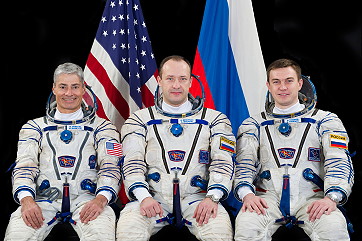 |
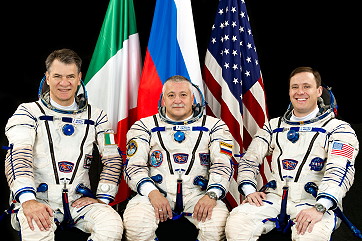 |
 |
Expedition Report
|
ISS Expedition 50 began with the undocking of
spacecraft Soyuz
MS on October 30, 2016 at 00:35:00
UTC. The former Expedition 49 (Anatoli
Ivanishin, Takuya
Onishi and Kathleen
Rubins) returned safely to Earth. On November 02, 2016, an ISS reboost was performed using module Zvezda thrusters. This reboost was to set up for Soyuz MS-03 launch on November 17, 2016. The engines started at 03:22 UTC and fired 96 seconds. The orbit was 2.450 kilometers raised and is now at 406.1 kilometers. Following a two days solo flight Soyuz MS-03 docked to ISS on November 19, 2016. Oleg Novitsky, Thomas Pesquet and Peggy Whitson became the ISS Expedition 50 (together with ISS Expedition 49 crew members Sergei Ryzhikov, Andrei Borisenko and Shane Kimbrough). With the arrival Expedition 50 became a six-person-crew. During their two-day transit from the launch pad at the Baikonur Cosmodrome in Kazakhstan to the station, the crew tested a variety of upgraded systems on their Soyuz MS-03 spacecraft. The modified Soyuz is equipped with upgraded thrusters that are fully redundant, additional micrometeoroid debris shielding, redundant electrical motors for the Soyuz' docking probe and increased power with more photovoltaic cells on the spacecraft's solar arrays. One month after launching from NASA's Wallops Flight Facility in Virginia, Orbital ATK's Cygnus cargo spacecraft left the International Space Station at 13:22 UTC on November 21, 2016. Cygnus arrived at the space station October 23, 2016 with more than 5,100 pounds (2,300 kg) of cargo to support science experiments from around the world. The spacecraft was detached from the Earth-facing side of the station's Unity module using the Canadarm2 robotic arm, operated by ground controllers. Robotics controllers maneuvered Cygnus into place, and then Expedition 50 robotic arm operators Shane Kimbrough and Thomas Pesquet gave the command for its release. Experiments delivered on Cygnus supported NASA and other research investigations during Expeditions 49 and 50, including studies in biology, biotechnology, physical science and Earth science - research that impacts life on Earth. Investigations included studies on fire in space, the effect of lighting on sleep and daily rhythms, collection of health-related data, and a new way to measure neutrons. Five hours after departing the station, the Saffire-II experiment has ignited a fire inside a module aboard the uncrewed spacecraft. The second in a series of three, the experiment allows researchers to study a realistic fire on an exploration spacecraft. Instruments on the Cygnus measured flame growth, oxygen use and more. Results could determine microgravity flammability limits for several spacecraft materials, validate NASA's material selection criteria, and help scientists understand how microgravity and limited oxygen affect flame size. The investigation is important for the safety of current and future space missions. Cygnus also released four LEMUR CubeSats from an external deployer on November 25, 2016 sending them to join a remote sensing satellite constellation that provides global ship tracking and weather monitoring. The spacecraft remained in orbit until November 27, 2016 when its engines fired twice, pushing it into Earth's atmosphere, where it burned up over the Pacific Ocean. NASA's International Space Station Rapid Scatterometer (ISS-RapidScat) Earth science instrument has ended operations following a successful two-year mission aboard the space station. The mission launched September 21, 2014, and had recently passed its original decommissioning date. ISS-RapidScat used the unique vantage point of the space station to provide near-real-time monitoring of ocean winds, which are critical in determining regional weather patterns. Its measurements of wind speed and direction over the ocean surface have been used by agencies worldwide for weather and marine forecasting and tropical cyclone monitoring. Its location on the space station made it the first space-borne scatterometer that could observe how winds evolve throughout the course of a day. The agencies that routinely used ISS-RapidScat's data for forecasting and monitoring operations include the National Oceanic and Atmospheric Administration (NOAA) and the U.S. Navy, along with European and Indian weather agencies. It provided more complete coverage of wind patterns far out to sea that could build into dangerous storms. Even if these storms never reach land, they can bring devastating wave impacts to coastal areas far away. During its mission, ISS-RapidScat also provided new insights into research questions such as how changing winds over the Pacific drove changes in sea surface temperature during the 2015-2016 El Niño event. Due to its unique ability to sample winds at different times of day, its data will be useful to scientists for years to come. ISS-RapidScat was born out of ingenuity, expertise and a need for speed. It was constructed in less than two years to replace its widely valued predecessor, NASA's decade-old QuikScat scatterometer satellite, at a fraction of the cost of the original - largely by adapting spare parts from QuikScat. On August 19, 2016 a power distribution unit for the space station's Columbus module failed, resulting in a power loss to ISS-RapidScat. Later that day, as the mission operations team from NASA's Jet Propulsion Laboratory (JPL) in Pasadena, California, attempted to reactivate the instrument, one of the outlets on the power distribution unit experienced an electrical overload. In the following weeks, multiple attempts to restore ISS-RapidScat to normal operations were not successful, including a final attempt on October 17, 2016. NASA currently does not plan to launch another scatterometer mission. However, the loss of ISS-RapidScat data will be partially mitigated by the newly launched ScatSat ocean wind sensor, a mission of the Indian Space Research Organization. ISS-RapidScat was the first continuous Earth-observing instrument specifically designed and developed to operate on the International Space Station exterior, but it's no longer the only one. The Cloud-Aerosol Transport System (CATS) joined the space station in January 2015 to provide cost-effective measurements of atmospheric aerosols and clouds in Earth's atmosphere. Two more instruments are scheduled to launch to the space station in 2017 - one that will allow scientists to monitor the ozone layer's gradually improving health, and another to observe lightning over Earth's tropics and mid-latitudes. Following that, two additional Earth science instruments are scheduled for launch in 2018 and 2019. The Russian cargo spacecraft Progress MS-04 launched on December 01, 2016 at 14:51:52.474 UTC to deliver more than two and a half tons of food, fuel and supplies to the International Space Station crew. The unpiloted Russian freighter launched from the Baikonur Cosmodrome in Kazakhstan. Due to a malfunction of the third rocket stage Progress did not reach the planned orbit and was lost. Russian mission control said on launch day an unpiloted Progress space station supply ship carrying nearly 5,400 pounds (2,450 kg) of rocket fuel, food, water and a new spacesuit burned up in Earth's atmosphere shortly after it blasted off from Kazakhstan, and evidence points to a problem with the third stage of the cargo carrier's Soyuz booster. The Russian space agency - Roscosmos - confirmed the demise of the Progress MS-04 cargo craft in a statement, saying the automated spaceship was lost as it flew nearly 120 miles (190 kilometers) over the Tuva Republic in Southern Russia. Engineers lost telemetry during the Soyuz rocket's third stage engine burn, and most of the vehicle's fragments burned up in the atmosphere, Roscosmos said. But Russian mission control lost contact with the rocket and its cargo payload at around T+plus 6 minutes, 22 seconds, according to Roscosmos. That was more than two minutes before the Progress spacecraft was to arrive in orbit. If all went according to plan, the Soyuz launcher should have deployed the cargo capsule into a preliminary orbit less than nine minutes into the flight. The Progress MS-04 spacecraft should have extended its power-generating solar panels and navigation antennas almost immediately after separating from the Soyuz upper stage. But "ratty" telemetry from the spacecraft left ground controllers struggling to verify the status of the Progress cargo freighter. Rob Navias, a NASA TV commentator covering the launch, reported there was some indication the Soyuz third stage and Progress supply carrier may have prematurely separated. The spacecraft was scheduled to dock to the rear port of the space station's Zvezda Service Module at 16:43 UTC on December 03, 2016. "Our astronauts and the Russian cosmonauts are safe aboard the station," a NASA spokesperson said in a statement. "Consumables aboard the station are at good levels." This launch failure marks the fourth time in 25 months that a supply ship heading for the space station has fallen short of the complex. A commercial Orbital ATK Cygnus cargo freighter crashed moments after liftoff in October 2014 when its Antares booster suffered an engine failure, then a Russian Progress spacecraft spun out of control after a botched separation from its Soyuz rocket in April 2015. SpaceX's Falcon 9 rocket disintegrated in mid-air on a June 2015 launch with a Dragon logistics capsule. The Japan Aerospace Exploration Agency (JAXA) launched its H-II Transfer Vehicle (HTV)-6 at 13:26:47 UTC on December 09, 2016 from the Tanegashima Space Center in southern Japan. Loaded with more than 4.5 tons of supplies, water, spare parts and experiment hardware for the six-person station crew, the unpiloted cargo spacecraft, named "Kounotori" - the Japanese word for white stork - set sail on a four-day flight to the station. Also, aboard the resupply vehicle are six new lithium-ion batteries and adapter plates that replaced later the nickel-hydrogen batteries currently used on the station to store electrical energy generated by the station's solar arrays. These were installed during a series of spacewalks in January 2017. On December 13, 2016, the HTV-6 approached the station from below, and slowly inch its way toward the complex. Expedition 50 Commander Shane Kimbrough and Flight Engineer Thomas Pesquet operated the station's Canadarm2 robotic arm from the station's cupola to reach out and grapple the 12-ton spacecraft (10:37 UTC) and installed it on the Earth-facing side of the Harmony module (13:53 UTC), where it spent six weeks. Flight Engineer Peggy Whitson monitored HTV-6 systems during the rendezvous and grapple. The crew of ISS Expedition 50 had the opportunity to celebrate the New Year on three different time zones up on the station (Russia, France and the United States). Shane Kimbrough and Peggy Whitson ventured outside the International Space Station (EVA) on January 06, 2017 (6h 32m) to perform a complex upgrade to the orbital outpost's power system (6h 32m). Working on the right-side truss of the space station (ITS), the astronauts installed adapter plates and hooked up electrical connections for three of six new lithium-ion batteries that were delivered to the station in December 2016 by transport spacecraft HTV-6. Each of the station's four main sets of arrays, two on each end of the truss, provide power to two electrical buses, or channels. To keep the lab operating during passes through Earth's shadow, each set of arrays is equipped with 12 massive nickel-hydrogen batteries, six per power channel. Alltogether, 48 NiH2 batteries store power for the station's eight electrical channels. NASA is in the process of replacing all 48 with 24 smaller, more efficient lithium-ion power packs, a complex task that will take several years to complete, Shane Kimbrough and Peggy Whitson then installed three so-called adapter plates in the S4 channel 3A electronics assembly and connected them to the new Li-ion batteries to maintain the circuitry originally used by pairs of NiH2 batteries wired in series. They also removed two more NiH2 batteries and mounted them on two of the adapter plates where they will remain in long-term storage. The spacewalkers completed their tasks an hour or so ahead of schedule, so flight controllers asked them to carry out three "get-ahead" tasks. Shane Kimbrough carried out a photo survey of a high-energy physics experiment known as the Alpha Magnetic Spectrometer (AMS) to help troubleshooters resolve a cooling issue and then helped Peggy Whitson retrieve a failed external light that will be replaced later. The astronauts also routed an ethernet cable as a get-ahead and Peggy Whitson stored a set of micrometeoroid shields outside the Quest airlock as originally planned. The shields will be installed during a future spacewalk. Prior to this and the next spacewalk, the new batteries were robotically extracted from a pallet to replace 12 older nickel-hydrogen batteries through a series of robotic operations. Nine of the older batteries were stowed in a cargo resupply craft for later disposal, while three remain on the station's truss, disconnected from the power grid. On January 13, 2017 Shane Kimbrough and Thomas Pesquet left the International Space Station to perform in a second EVA a complex upgrade to the orbital outpost's power system (5h 58m). Working on the right-side truss of the space station (ITS), the astronauts installed adapter plates and hooked up electrical connections for the final three of six new lithium-ion batteries that were delivered to the station in December 2016 by transport spacecraft HTV-6. Astronauts were also able to accomplish several get-ahead tasks including stowing padded shields from Node 3 outside of the station to make room inside the airlock and taking photos to document hardware for future spacewalks. Six weeks after delivering more than 4.5 tons of supplies and experiments to the International Space Station, the unpiloted Japanese cargo spacecraft HTV-6 departed the station on January 27, 2017. Ground controllers used the station's Canadarm2 robotic arm to unberth the Japan Aerospace Exploration Agency's (JAXA's) H-II Transport Vehicle-6 (HTV-6) several hours (11:00 UTC) before its release. Space station Flight Engineer Thomas Pesquet, with back-up support from Expedition 50 Commander Shane Kimbrough, then commanded the station's robotic arm to release HTV-6, loaded with station trash, at 15:46 UTC. The cargo ship moved to a safe distance below and in front of the station for about a week's worth of data gathering with a JAXA experiment designed to measure electromagnetic forces using a tether in low-Earth orbit. JAXA deorbited the craft on February 05, 2017 and burned it up harmlessly over the Pacific Ocean. The HTV-6 launched from the Tanegashima Space Center in southern Japan on December 09, 2016 and arrived at the station on December 13, 2016. It delivered water, spare parts and experiment hardware to the six-person station crew, including six new lithium-ion batteries and adapter plates that replaced the nickel-hydrogen batteries previously used on the station to store electrical energy generated by the station's solar arrays. These were installed through a blend of complex robotics and two spacewalks in January 2017. The unmanned Progress MS-03 cargo ship undocked from the International Space Station on January 31, 2017 at 14:25:09 UTC. The freighter was filled with trash and later deorbited into the Earth's atmosphere during which it will burn up over the Pacific Ocean. The uncrewed Dragon CRS-10 or SpX-10 cargo spacecraft launched on February 19, 2017 at 14:38:59 UTC on a Falcon 9 rocket from Launch Complex 39A at NASA's Kennedy Space Center in Florida. This was the tenth mission by SpaceX under NASA's Commercial Resupply Services contract. In addition to supplies and equipment, Research materials flying inside the Dragon's pressurized area included a crystal growth experiment that will crystallize a monoclonal antibody that is undergoing clinical trials for the treatment of immunological diseases. Growing the crystal in space will allow it develop more than it could on Earth where gravity causes crystals to collapse on themselves. Preserving these antibodies in crystals allows researchers a glimpse into how the biological molecules are arranged, which can provide new information about how they work in the body. So far, Earth-grown crystalline suspensions of monoclonal antibodies have proven to be too low-quality to fully model. Better defining how some bacteria become drug-resistant is the focus of another experiment that aims to develop medicines that counter the resistance. Stem cells like those used to treat strokes and other occurrences also will be studied using experiment supplies brought up on this flight. The equipment aboard the Dragon included a major instrument that will survey Earth's upper atmosphere in a continuation of one of NASA's longest-running Earth-observing programs. Called SAGE III for Stratospheric Aerosol and Gas Experiment, the instrument examines the levels of ozone, aerosols, nitrogen dioxide and water vapor in the stratosphere and troposphere high above Earth. It is the latest version of an experiment that began in 1979 and has created a multi-decade record of measurements. The 2,200-pound (998 kg) instrument will be connected to the outside of the station to make daily observations for several years. An experiment that will use the microgravity environment to grow stem cells that are of sufficient quality and quantity to use in the treatment of patients with stroke. A Merck Research Labs investigation that tests growth in microgravity of antibodies important for fighting a wide range of human diseases, including cancer; and two Earth science payloads, NASA's Stratospheric Aerosol Gas Experiment III mission and Lightning Imaging Sensor, which will provide continuity for key climate observations and data records. The International Space Station is a convergence of science, technology and human innovation that demonstrates new technologies and makes research breakthroughs not possible on Earth. The space station has been occupied continuously since November 2000. In that time, more than 200 people and a variety of international and commercial spacecraft have visited the orbiting laboratory. The space station remains the springboard to NASA's next great leap in exploration, including future missions to an asteroid and Mars. About 10 minutes after launch, Dragon reached its preliminary orbit, deployed its solar arrays and began a carefully choreographed series of thruster firings to reach the space station. SpaceX landed the Falcon 9 first stage on land. On February 22, 2017 Dragon CRS-10 aborted its approach to the space station due to an incorrect value associated with the on-board computer. After a in result three-day trip, Shane Kimbrough and Thomas Pesquet used the station's robotic arm to capture Dragon (10:44 UTC) when it arrived on station on February 22, 2017. The spacecraft was berthed to the Earth-facing port on the Harmony module (13:12 UTC). By the next day, the crew pressurized the vestibule between the station and Dragon, and then opened the hatch that leads to the forward bulkhead of Dragon. For about a month, crew members unloaded the spacecraft and reloaded it with cargo to return to Earth on March 19, 2017. Flight controllers used the Canadarm2 robotic arm to detach the Dragon capsule, from the Earth-facing side of the station's Harmony module on March 18, 2017. In this position the spacecraft was parked overnight. After the controllers maneuvered Dragon into place, Expedition 50 astronauts Thomas Pesquet and Shane Kimbrough released it on March 19, 2017 at 09:11 UTC. Dragon's thrusters were fired to move the spacecraft a safe distance from the station before SpaceX flight controllers in Hawthorne, California, commanded its deorbit burn about 15:00 UTC. The capsule splashed down about 14:54 UTC in the Pacific Ocean off the coast of Baja California, where recovery forces retrieved the capsule and its more than 5,400 pounds (2,450 kg) of cargo. This cargo included science samples from human and animal research, external payloads, biology and biotechnology studies, physical science investigations and education activities. The launch of the unpiloted Russian Progress MS-05 occurred on February 22, 2017 at 05:58:33 UTC from the Baikonur Cosmodrome in Kazakhstan. The freighter delivers three tons of food, fuel and supplies to the International Space Station. The new-series spacecraft Progress MS and Soyuz MS were developed as a result of a radical upgrade of Progress M and Soyuz TMA spacecraft. The onboard command radio system Kvant-B was replaced with an integrated command and telemetry system with an additional telemetry channel. The new command radio link will make it possible to receive signals via relay satellites Luch-5, which will significantly increase the radio coverage zone for the spacecraft - up to 70% of an orbit. The spacecraft are equipped with an advanced onboard radio system for rendezvous and docking Kurs-NA. As compared with an earlier model, Kurs-A, it has improved mass and dimensions parameters and makes it possible to delete from the spacecraft hardware configuration one of the three radio antennas. Instead of the analog TV system Klyost, the spacecraft use a digital TV system, which makes it possible to maintain communications between the spacecraft and the station via a space-to-space RF link. Also included into the onboard equipment of the Soyuz MS and Progress MS series spacecraft to replace the equipment that is being phased out of production is a new Digital Backup Loop Control Unit developed by RSC Energiya, an upgraded Rate Sensor Unit BDUS-3A and a LED headlight SFOK. Thanks to the use of new ground and onboard radio systems, it became possible to use state-of-the-art data transmission protocols, which resulted in improved operational stability of spacecraft control system. The spacecraft docked to the Pirs docking compartment of the space station at 08:29:49 UTC on February 24, 2017. Progress MS-05 spent more than four months docked at the station before departing on July, 20 2017 for its deorbit into the Earth's atmosphere. On March 02, 2017, an ISS reboost was performed using Zvezda thrusters. This reboost was to set up for Soyuz MS-04 launch on April 20, 2017. The engines started at 03:10 UTC and fired 43 seconds. The ISS got 0.65 m/sec more speed. The orbit was raised to 403.23 km x 418.9 km. On March, 24, 2017 Shane Kimbrough and Thomas Pesquet left the International Space Station for the third spacewalk in Expedition 50 (6h 34m) to prepare the Pressurized Mating Adapter-3 (PMA-3) for installation of the second International Docking Adapter (IDA), which will accommodate commercial crew vehicle dockings. The PMA-3 provides the pressurized interface between the station modules and the docking adapter. Expedition 50 Commander Shane Kimbrough and Thomas Pesquet disconnected cables and electrical connections on PMA-3 to prepare for its robotic move on, March 26, 2017. PMA-3 will be moved from the port side of the Tranquility module to the space-facing side of the Harmony module, where it will become home for the docking adapter, which will be delivered on a future flight of a SpaceX Dragon cargo ship. The spacewalkers also installed on the starboard zero truss (ITS) a new computer relay box equipped with advanced software for the adapter. The two spacewalkers lubricated the latching end effector on the Canadarm2 robotic arm, inspected a radiator valve suspected of a small ammonia leak and replaced cameras on the Japanese segment of the outpost. Radiators are used to shed excess heat that builds up through normal space station operation. Pressurized Mating Adapter-3 (PMA-3), a docking tunnel used to attach two space shuttles to the International Space Station, was relocated at the complex on March 26, 2017 to be used by Boeing and SpaceX crewed spacecraft. The move, commanded by flight controllers using the space station's robotic arm, was the sixth time that PMA-3 was repositioned since its launch on the space shuttle Discovery's STS-92 mission in 2000. Shane Kimbrough and Peggy Whitson performed the next EVA on March 30, 2017 (7h 04m). This spacewalk featured the astronauts reconnecting cables and electrical connections on PMA-3 at its new home on top Harmony. They also installed the second of the two upgraded computer relay boxes on the station's truss and installed shields and covers on PMA-3 and the now-vacant common berthing mechanism port on Tranquility. On April 03, 2017, an ISS reboost was performed using module Zvezda thrusters. This reboost was to set up for Soyuz MS-02 landing on April 2017 and Soyuz MS-04 launch on April 20, 2017. The engines started at 14:20 UTC and fired 35.6 seconds. The ISS got 0.65 m/sec more speed. Finally, the station command changed from US astronaut Shane Kimbrough to US astronaut Peggy Whitson. With undocking of Soyuz MS-02, carrying Sergei Ryzhikov, Andrei Borisenko and Shane Kimbrough, on April 10, 2017 at 07:57:26 UTC the Expedition 50 concluded and the new ISS Expedition 51 began. Among the ESA Proxima mission experiments are: The Matiss experiment is investigating antibacterial properties of materials in space to see if future spacecraft could be made easier to clean. The experiment consists of four identical plaques that ESA astronaut Thomas Pesquet will place in the European Columbus laboratory and leave for at least three months. France's CNES space agency, in collaboration with the ENS university of Lyon, research institute CEA Tech - LETI and construction company Saint-Gobain, selected five advanced materials that could stop bacteria from settling and growing on the surface. A sixth element, made of glass, is used as control material. The materials are a diverse mix of advanced technology - from self-assembly monolayers and green polymers to ceramic polymers and water-repellent hybrid silica. The smart materials should stop bacteria from sticking to the surface and growing, effectively making them easier to clean and more hygienic - but which one works best? The units are open on the sides to let air flow naturally through and collect any bacteria floating past. Thomas Pesquet will put the four units on the European Drawer Rack, on the European Physiology Modules and at air vents. At the end of his mission next year he will tape the sides to block other bacteria from entering and wrap them in plastic. They will be returned for analysis in the Soyuz spacecraft alongside Thomas Pesquet. BRAIN-DTI: Humans are adaptable beings. Wear glasses that turn your view of the world upside-down and within two weeks your brain will have adapted to the topsy-turvy world. Researchers suspect that astronauts' brains adapt to living in weightlessness by using previously untapped links between neurons. As the astronauts learn to float around in their spacecraft, left-right and up-down become second nature as these neuronal connections are activated. To confirm this theory, up to 16 astronauts will be put through advanced Magnetic Resonance Imaging (MRI) scanners before and after their flights to study any changes in their brain structure. A control group on ground will undergo the same scans for further comparison. The research is providing scientists on Earth clues where to look in the brains of people who suffer from disorders based on previous traumatic experiences such as vertigo. Energy: Scientists want to know how to feed people on future missions, such as a journey to Mars. An 18-month mission to the Red Planet requires planning the accommodation of all hardware and supplies down to the kilogram. This experiment sets out to ask: how much food does an astronaut need for 18 months in space? Imagine an astronaut running out of energy during a critical moment such as a Mars landing. This experiment looks at the energy expenditure of astronauts to plan adequate but not excessive food supplies. It is a complex experiment and many astronauts are involved. ESA astronauts André Kuipers, Luca Parmitano, Alexander Gerst, Samantha Cristoforetti, Timothy Peake and others took part in this experiment on their missions before Thomas Pesquet. As with most physiology experiments, measurements are conducted before, during and after flight. This is the only way to record the differences between living on Earth and in microgravity. The space part of this experiment lasts 11 days. Space food is eaten from a special package on the first two days and everything is registered with bar codes and on written forms to know exactly what Thomas Pesquet will eat. He will drink water with deuterium isotopes and regularly collect water and urine samples. The isotopes allow the scientists to examine how Thomas Pesquet's energy levels change over the 11-day period. A mask measures the amount of oxygen Thomas Pesquet absorbs for 20-50 minutes at a time during the second day to deduce energy consumption. All movements are recorded during the experiment using an activity monitor. VIRTUAL REALITY: GRASP/PERSPECTIVES: Thomas Pesquet will be the first astronaut to use the Perspectives virtual reality gear in space and take part in the Grasp experiment. Living in space requires adaptation from more than just the astronaut's body. The absence of a traditional up or down requires the brain to adapt to the three-dimensional world of weightlessness. Virtual reality headsets offer a way to understand how an astronaut brain adapts to its new environment and the Grasp experiment will use a new headset supplied by France's space agency CNES. Grasp will see Thomas Pesquet reaching for virtual objects so researchers can understand how important gravity is compared to the other senses when we reach for an object. The research will help us understand the workings of the human vestibular system and how it connects to the other sensory organs. In other words, it will achieve a better understanding of the physiology behind eye-hand coordination as well as shedding light on how to best treat the loss of vestibular function on Earth. This research will also be useful in helping astronauts during spacewalks. GRIP: In more than 20 experiments flown over the last 15 years on parabolic flights that offer 20 seconds of weightlessness, a team of scientists has charted how humans cope with grasping objects in space. Astronauts often perform delicate maneuvers on small objects, and calculating how living in weightlessness influences their grasp and fine motor controls is important in an environment that allows little room for error. The work carried out on parabolic flights has paved the way for an experiment that Thomas Pesquet will run on the Space Station during Proxima. He will grip a purpose-built sensor with eyes open and then closed to assess how the body adapts to situations where there is no up or down. These experiments are also helpful to engineers designing prosthetic limbs on Earth. SPACE HEADACHES: Almost three-quarters of astronauts suffer from headaches in space, which usually are worse in the first few weeks. Described by some as 'exploding', the headaches are unlike any felt on Earth. This could be bad news for space tourists who spend a short time in space and want to enjoy it as much as possible. This experiment uses regular questionnaires to investigate the headaches experienced by astronauts. Thomas Pesquet will fill in a questionnaire daily in the first week and then weekly to the end of his mission to study the number of headaches he has on the Station. The researchers are looking to understand the causes of headaches in space. Are they linked to the fluid movement towards the head in microgravity? Is there a link between headaches on the ground and in space? ESA astronaut André Kuipers was the first test subject during his mission in 2012, followed by ESA astronauts Luca Parmitano, Alexander Gerst, Samantha Cristoforetti, Andreas Mogensen and Timothy Peake. The headaches are classified and analyzed according to the International Classification of Headache Disorders. Cartilage: Scientists think that reduced stress on bones may be responsible for the progressive cartilage loss seen in long-term space residents. MRI scans of Thomas Pesquet's knees will be taken before and after his stay in orbit. The results of this experiment are expected to help develop technologies to counteract bone loss for space travellers and bedridden patients on Earth. Early Detection of Osteoporosis in Space: This experiment will look at changes in bone structure before and after a spaceflight by studying markers in blood and urine, as well as through a tomography scan. For this experiment, astronauts follow a strict diet during the data collection stage. All astronauts lose up to 1% of their bone mass each month in space, similar to osteoporosis. Obviously, this is worrying for longer missions to far-away planets or celestial bodies. Researchers are interested to find out if they can detect the changes quickly and also when the changes occur. This research will help detect osteoporosis on Earth, a disease that most people over 55 suffer from to some degree. SKIN-B: Our skin protects us, regulates our temperature and helps us to feel objects. As we grow older, our skin becomes more fragile and takes longer to heal from injuries. Astronauts lose more skin cells and age faster during spaceflight. A common complaint of astronauts is cracking skin and rashes or itchiness. This experiment is the first research into skin in space, collecting data on skin structure, oxygenation, hydration and elasticity. The goal is to develop a computer model of how skin ages. Results on Thomas Pesquet's skin will improve the model and could contribute to helping protect people's skin on Earth as well as in space. Muscle Biopsy: Living in microgravity leads to the loss of muscle mass, function and motor control. By taking samples of Thomas Pesquet's soft tissue, the Muscle Biopsy experiment looks for the root of the problem of maintaining muscle mass in space. The European astronaut will provide feedback on how his muscles perform before and after his flight. SARCOLAB-3: Astronauts lose muscle in space and need to exercise daily to minimize loss. Thomas Pesquet' ankle and kee muscles were analyzed as they contract before and after his mission. These muscles will hardly be used in space and Sarcolab will get a better understanding of how muscles and motor control deteriorate when unused. During Proxima Thomas Pesquet will use the Mares muscle measurement machine to take readings of his ankle and knee. The findings will help people on Earth who cannot use their muscles for a period of time such as after a severe accident. SKINSUIT: Astronauts have been known to grow by up to 7 cm as their spines lengthen in weightlessness. As a result, many suffer from backache during their missions. Thomas Pesquet will evaluate in space a new suit designed to combat the lack of gravity effects by squeezing the body from the shoulders to the feet with a similar force to that felt on Earth. ESA astronaut Andreas Mogensen did a first test of a Skinsuit during his 10-day iriss mission in 2015, Thomas Pesquet will continue testing on his long-duration mission. Each Skinsuit is tailor-made for its wearer with a bidirectional weave. The suits need to fit tightly but comfortable, while creating the right amount of force in the right places. ESA's Space Medicine Office is working with the universities of Kings College and University College in London, England, and the Massachusetts Institute of Technology, USA, to test the suit prototypes. Seedling growth-3: Most plants need light to grow but plants on the International Space Station adapt to living with 16 sunrises and sunsets each day under artificial light. Finding alternatives to sunlight is important because more countries rely on greenhouses for fresh produce. This third part in a series of experiments analyses how Arabidopsis Thaliana reacts to red light and microgravity focusing on how the structure of individual cells grow. Arabidopsis thaliana is a common plant found all over Europe, Asia and Africa. It was the first plant to have its entire DNA sequenced so biologists know this species well. Better understanding of this plant has increased our knowledge of plants in general. This experiment in space will further help to understand how the plant reacts to light and gravity. METALS: Thomas Pesquet will use the Electromagnetic Levitator in ESA's Columbus laboratory. This furnace can heat metals to 2000°C without contact and then let them cool rapidly. Blacksmiths have been using this technique for centuries to create steel tools and weapons by heating, hammering and quenching in water. This process freezes the steel's structure and causes it to harden and stay sharp. Understanding the underlying physics is complicated and factors such as gravity and the mould used to hold the metal in place influence the process, making it difficult to get to the fundamentals. Observing liquid metals cooling in weightlessness removes the complexity to reveal the core process of physics. The Electromagnetic Levitator takes it a step further and suspends the metals in mid-air as they melt and solidify. The metals can be heated in a vacuum or in a gas. A high-speed camera records the rapid process of solidification and sensors record the temperature and other variables. The metals formed are retrieved and returned to Earth for analysis. MATERIALS SIENCE LABORATORY: These experiments use ESA's Materials Science Laboratory in the US laboratory Destiny. Nothing less than a miniature metal furnace in space, the Materials Science Laboratory can heat samples to 1400°C before letting the metals solidify. Metcomp investigates how weightlessness affects the metallic structure of a nickel-titanium alloy. When particles come into contact with a liquid they can be pushed away or engulfed by the liquid, like a ball floating on the sea. Depending on the size of an incoming wave, the ball could be pushed forwards like a surfer or submerged by the water. On an atomic scale, a similar process occurs with metals as they come into contact with other liquid metals. Understanding this process could lead to more exotic metal alloys or improve existing complex alloys. SETA-2 looks at eutectic compositions of aluminium-magnesium-silicon alloys. Depending on the mixture of elements in an alloy, it will solidify at different temperatures. When a mix of elements solidifies at the lowest temperature, it is known as a eutectic composition. This experiment aims to understand the processes for eutectic alloys. Knowledge of these types of alloys will improve the casting process on Earth. PLASMA: We know our world is made of atoms and molecules, but even with the most powerful microscope we cannot see them moving, meaning our understanding of how molecules interact is based on experimentation and assumptions. The ESA-Roscosmos Plasma Kristall-4 experiment is recreating atomic interactions on a larger scale. A plasma is an electrically charged ('ionized') gas. It is considered to be the fourth state of matter, distinct from gas, liquid and solid matter. Plasma Kristall-4 will inject microscopic dust particles into a neon and argon tube to act as atom substitutes. As they float in the charged gas, they will collect negative charges as positive ions accumulate around them. As a result, they will start to repulse each other - just like atoms do in a fluid state. Doing this research on Earth is not possible - the dust particles would fall with gravity and the simulated atoms would not behave realistically. This experiment is making the atomic scale visible for analysis and will help scientists to understand the interactions of atoms. Fluidics: How liquids behave on Earth is hard to predict and even harder in space without gravity. Getting the last drop out of a packet of orange juice can be a frustrating experience - imagine the challenge for engineers designing satellites to use every drop of fuel in weightlessness or designing rockets with fuel tanks that must deliver fuel to the engines under extreme loads. The Fluidics experiment is looking at a phenomenon called 'sloshing' - how liquids move inside closed spaces. The goal is to help industry design better satellite fuel-systems to increase their life and make them less expensive. A second part of the experiment will be looking at surface turbulence in liquids. On Earth, gravity and surface tension influence how a force dissipates in waves or ripples. By conducting Fluidics in space, scientists can observe how surface forces behave without gravity - removing one factor from the equation simplifies understanding the phenomenon. The experiment consists of three small transparent spheres with a centrifuge to move the liquids inside. One sphere used for the wave turbulence experiment will hold distilled colored-water, the other two spheres used for the sloshing experiments use a special liquid developed with low viscosity and little surface tension. Aside from gaining a better understanding of the movement of fluids this experiment could help us understand our oceans and on a larger scale our planet's climate as a whole. SODI-DCMIX 3: Fluids and gases are never at rest, even if they appear to be when viewed by the naked eye. Molecules are constantly moving and colliding even though there is no microscope powerful enough to see it. Scientists are interested in observing and measuring how temperature changes lead to the fluid's constituents redistributing. This research will reveal important, practical information such as how fluids mix or separate in different conditions. Creating accurate models of how fluids warm up and spread is harder than it might seem. School physics classes can work out how long it would take to boil a liter of water, but what if the water were mixed with oil or a multitude of different liquids? A mixture on the International Space Station is free from the constraints of gravity and will only react to temperature. SODI-DCMIX exploits this fact to record concentration gradients in mixtures in space to understand how molecules behave in liquids. The experiment will run for around eight weeks and the data from this third version of SODI-DCMIX will be stored on flash disks and returned to the international team of researchers on Earth later this year. VESSEL-ID SYSTEM: Large marine vessels continuously send information on their speed, location and direction. The Automatic Identification System has been around for decades to help harbor authorities' direct ships near ports and avoid collisions. The system uses basic VHF radio signals and was designed before satellites existed, so it is used only near land. This means that ships are on their own in open waters. Ships can receive signals from each other but in the middle of the Pacific Ocean nobody is monitoring their location. Vessel ID is an ESA satellite receiver that is the marine equivalent of air traffic control systems. By capturing the radio waves in space from the Automatic Identification System, it tracks ships on the open seas. The system itself does not need to be adapted but as it was not designed for global coverage from space a technology demonstration is needed to test receiving and processing the signals. Nobody knew how many ships continue to broadcast identification on the open seas, nor how many have antennas that beam their identification up to space as well as over land. On a good day, around 400,000 position reports are received from more than 22,000 ships. If all goes well, global maritime surveillance using dedicated satellites could be in sight, much like there is for air traffic. With global tracking of ships, collisions could be avoided, piracy and smuggling would be easier to combat, protected areas such as coral reefs could be enforced, and less-polluting shipping lanes could be defined. Solar is a combination of instruments placed on the outside of Europe's Columbus laboratory that together measure the Sun's output with unprecedented accuracy, from the infrared to the ultraviolet. Solar is run automatically from the ground and uses its sensors to measure the Sun's temperature. This is an exciting time for the scientists behind Solar as they expect the Sun to be at the peak of its 11-year cycle. The Sun is the source of energy for most life on Earth and it dominates our daily lives. The more we understand our Sun, the better we can protect life on Earth and our satellites in space. To predict how the Sun will behave, scientists create complex computer models to build a virtual star. With more data, scientists can fine-tune their models. These models are an important step towards understanding humankind's impact on Earth's climate. EUCPAD: To gain a clearer picture of astronauts' radiation environment, ESA has developed an electronic dosimeter that can provide almost instantaneous information to its wearer, on their current radiation exposure and dynamics of their immediate environment. The system is sensitive enough to differentiate between different radiation types, including the high energies of cosmic radiation coming from far out in our Galaxy. The European Crew Personal Active Dosimeter - EuCPAD - comprises a wearable unit with a storage device for battery charging and data transfer - similar in purpose to a smartphone charging station, if much more sophisticated. The system was first tested by ESA astronaut Andreas Mogensen during his 10-day iriss mission and Thomas Pesquet will now wear it for longer periods and store the radiation received at short intervals. Having more information about where or when radiation exposure occurs is an important benefit of the system. Knowing which Station modules provide the best shielding could be valuable in designing future deep-space spacecraft. DOSIS-3D helps to understand space radiation and how it penetrates the Space Station walls. Active and passive radiation detectors are being used to map the radiation in all of the Station's modules. Europe's Columbus laboratory is monitored by 11 passive dosimeters. The dosimeters are about the size of a pack of playing cards and attached to the walls of Columbus with Velcro. They record how much radiation has been absorbed in total during the period they are in space. This experiment has been monitoring radiation levels for a number of years and after each six-month crew rotation the detectors are replaced to record changes in radiation. ESA astronaut Thomas Pesquet will remove the old set of dosimeters from Columbus, pack them for return to Earth, and stick a new set to the walls. In addition to the passive detectors, DOSIS-3D uses active dosimeters that measure fluctuations in radiation levels over time. Data from all Station partners are shared to create as complete a picture of space radiation as possible. MAGVECTOR: Earth's magnetic field is constantly flowing around us and influencing our daily lives. Aside from protecting us from solar winds, it also makes a compass work and it helps birds to find their destination when migrating. This same force can interact and interfere with equipment and experiments on the International Space Station. Magvector investigates how Earth's magnetic field interacts with an electrical conductor. Using extremely sensitive magnetic sensors placed around and above the conductor, the researcher will gain insight into how the magnetic field influences how conductors work. This research will not only help improve future Space Station experiments and electrical experiments but it could offer insights into how magnetic fields influence electrical conductors in general - the backbone of our technology. Haptics-1 is an experiment that fits in the vision of astronauts controlling planetary explorers from orbit. Ideally, astronauts circling a planet would have as much feedback as possible to help control the robots exploring below them. An important aspect of this is 'haptic' feedback - transferring touch and vibrations. Most people can tie their shoelaces with their eyes closed, but try doing it when your hands are numb. This is because your brain processes the feeling of touch and takes that into account when handling objects. Generally, a soft, fragile object is handled with more care than a hard one, and by judging how the object feels you automatically adjust your grip. Haptics-1 is looking at developing robots that transmit touch information to the astronaut, but until now nobody has checked to see how people in space respond to force feedback. Will astronauts feel and react the same as on Earth to generated vibrations? How will the feedback feel in space, where the feedback joystick has to be strapped to their bodies to prevent them floating away? A simple joystick can move left or right. Behind the scenes, intricate servo-motors provides counterforce or vibrations. Thomas Pesquet will use the joystick to test the limits of feeling in experiments similar to the classic game Pong. Haptics-2 is an extension of Haptics-1 by connecting the force-feedback joystick on the International Space Station to a similar model on Earth - live. As Thomas Pesquet moves the Haptics joystick an operator on Earth will feel the same forces as Thomas Pesquet, very similar to shaking each other's hand - only 1000s of km away. The first-ever demonstration of space-to-ground remote control with live video and force feedback was performed with NASA astronaut Terry Virts orbiting Earth on the International Space Station as he shook hands with ESA telerobotics specialist André Schiele in the Netherlands in 2015. Thomas Pesquet will continue to test the joystick that allows astronauts in space to 'feel' objects from hundreds of kilometers away. Each signal from Earth to Thomas Pesquet has to travel from the International Space Station to another satellite some 36,000 km above Earth, through Houston mission control in USA and across the Atlantic Ocean to ESA's ESTEC technical centre in the Netherlands, taking up to 0.8 seconds in total both ways. As the Space Station travels at 28,800 km/h, the time for each signal to reach its destination changes continuously, but the system automatically adjusts to varying time delays. The system's adaptability and robust design means it can be used over normal data cell-phone networks. This makes it well suited for remote areas that are difficult to access or when disasters have destroyed other communication networks. The direct and sensitive feedback coupled with safeguards against excessive forces would allow rovers and robots to carry out delicate operations in the extreme conditions found in offshore drilling and nuclear reactors, for example. It could even help to provide humanitarian aid after earthquakes or other natural disasters. WISE-NET: This experiment places low-power sensor-nodes in ESA's Columbus laboratory, Node-2 and the US Destiny laboratory on the International Space Station. The sensors form a wireless network to monitor environmental factors such as temperature, pressure and humidity. The goal is to test this wireless sensor network in space. Another objective is to see if small amounts of energy could be 'harvested' from inside the Space Station, where light, airflows or differences in temperature could be used to return power for experiments such as the system itself. Aside from the environmental benefits of extracting as much energy as possible a modification of the Wise-Net system could be applied on human beings. A number of low-power sensors on a patient's body could provide continuous vital-sign monitoring to nurses and doctors in hospitals. The Aquamembrane experiment will test a new type of membrane that can be used to filter water using biomimetic techniques - copying nature. Recycling water is very important on the International Space Station where supplies are costly and limited. Already up to 80% of astronaut's urine, sweat and condensation is reused for drinking after purification in space, but engineers are always looking to improve the process. The technology behind Aquamembrane requires little extra energy or moving parts and its final goal is to revolutionize water purification on Earth. AQUAPAD: Monitoring the quality of the water we drink is extremely important and even more so on the International Space Station where 80% of drinking water is recycled urine. Aquapad aims to simplify the regular testing of the Station's water. A small quantity of water is absorbed by a cotton swab that reacts to bacteria to form colored dot. Using the EveryWear application on his tablet, Thomas Pesquet will take a picture of the dots and EveryWear will calculate precisely how many bacteria are present and whether it is safe to drink. Although developed for the International Space Station the Aquapad technology is obviously interesting for use on Earth such as in disaster areas when water might be contaminated. ECHO: ESA astronaut Thomas Pesquet will setup and run the Echo unit that is a high-performance medical ultrasound to visualize the human body. A number of ultrasound machines have been sent to the International Space Station since the 1990s but this device is the next generation that allows for researchers on Earth to operate the device and view a high-quality image directly. The astronaut using the device can talk to the researchers and view the same image to follow as he or she places the ultrasound in the right spot on their body. The challenge in designing Echo was building a small but precise machine that is reactive enough to be operated by researchers many kms away. The Canadian Space Agency is already planning on using Echo to continue its experiments into the heart as soon as Thomas Pesquet has checked the equipment. EVERYWEAR: While in space Thomas Pesquet will be the first to test a new way to collect information called EveryWear. EveryWear will be used for science experiments, biomedical support and technology demonstrations. The French-designed technology is as simple as a custom application for a tablet that Thomas Pesquet will carry around. The application promises to be a huge time-saver as it records and transmits data from as many experiments as possible. The system can be used for questionnaires, taking medical and clinical logs, monitoring exercise when coupled with the EveryWear Smartshirt and even assess Thomas Pesquet's sleep quality. Presently if an experiment requires Thomas Pesquet to take a log of his diet, he would need to write down each piece of food he ingested throughout the day. With EverWear he could simply scan the barcode that is on each pack of food. For Proxima Thomas Pesquet will use EveryWear to automatically calculate the amount of the bacteria in the Aquapad experiment as well as for the Skinsuit experiment as a digital questionnaire. The Muscle Atrophy Research and Exercise System, or MARES for short, is a muscle-measurement machine on the International Space Station that monitors astronauts' muscles as they work out. Muscle strength decreases during spaceflight and researchers need to know why this happens in order to prepare for long-duration missions and safe space tourism. MARES is a physiology instrument that offers detailed information about how muscles behave during spaceflight. ESA astronaut Thomas Pesquet is setting up MARES in the European Columbus laboratory end November 2016. Colleague ESA astronaut Samantha Cristoforetti did an initial test-run during her Futura mission on the International Space Station in 2015. She set up the machine and checked that the motors move as planned but did not take a place in the chair as an experiment subject. ESA astronaut Andreas Mogensen performed a second part of the MARES commissioning during his ' iriss' mission in 2015 by deploying the machine in its ' Ankle Configuration' to get data on his ankle movements. This run validated the machine for more use for scientific experiments in the future. Among the US experiments are: Tissue Regeneration-Bone Defect Only a few animals, such as tadpoles and salamanders, can regrow a lost limb, but the onset of this process exists in all vertebrates. Tissue Regeneration-Bone Defect (Rodent Research-4 (CASIS)), a U.S. National Laboratory investigation sponsored by the Center for the Advancement of Science in Space (CASIS), studies what prevents other vertebrates such as rodents and humans from regrowing lost bone and tissue, and how microgravity conditions impact the process. Results will provide a new understanding of the biological reasons behind the inability for humans to grow a lost limb at the wound site, and could lead to tissue regeneration efforts in space. Crew members in orbit often experience reduced bone density and muscle mass, a potential consequence of microgravity-induced stress. Previous research indicates that reduced gravity can promote cell growth, making microgravity a potentially viable environment for tissue regeneration research. Results could ultimately lead to tissue regeneration, which would be of great benefit to civilians and military patients who have lost limbs. Lighting Effects Spaceflight exposes crew members to environments that are not conducive to a typical day-night sleep and wake schedule, or circadian rhythm. In fact, crew members aboard the International Space Station see 16 sunrises each day, which can impact their sleep schedules. Abnormal day lengths, late-night work hours, and shifting time zones abruptly can all lead to circadian misalignment, which can reduce sleep quality and quantity, and impair alertness, reaction time and cognition, and increase the risk of fatigue-related accidents on the station. The Testing Solid State Lighting Countermeasures to Improve Circadian Adaptation, Sleep and Performance during High Fidelity Analog and Flight Studies for the International Space Station (Lighting Effects) investigation combats this challenge by replacing the current light bulbs on board the station with bulbs that can be adjusted for intensity and wavelength throughout the day. Research has shown that monochromatic and narrow bandwidth short-wavelength blue lights are effective in suppressing nocturnal melatonin, phase-shifting the internal circadian pacemaker and enhancing alertness and performance. The enrichment of white-appearing light in the blue portion of the spectrum has strong potential as a safe, non-pharmacological countermeasure to reduce the risk of circadian misalignment and performance deficits in space. Results from this investigation could lead to a better understanding of how electric lighting can be used to improve alertness during waking hours and promote sleep during evening hours, both on ground and in orbit. Stratospheric Aerosol and Gas Experiment III The SAGE program is one of NASA's longest running Earth-observing programs, providing continuous, long-term data to help scientists better understand and care for Earth's atmosphere. SAGE was first operated in 1979 following the Stratospheric Aerosol Measurement, on the Apollo-Soyuz mission. SAGE III, an investigation developed by Ball Aerospace and Technologies Corporation, ESA (the European Space Agency), Thales Alenia Space - Italia, and NASA's Langley Research Center, will measure stratospheric ozone, aerosols, and other trace gases by locking onto the sun or moon and scanning a thin profile of the atmosphere. In addition to measuring the key components of the atmosphere, SAGE III also will measure temperatures in the stratosphere and mesosphere, as well as profiles of trace gases. Understanding these measurements will allow national and international leaders to make informed policy decisions regarding the protection and preservation of Earth's atmosphere. When the ozone is damaged, all of Earth's inhabitants, including humans, plants and animals, are exposed to more harmful sun rays, which can cause long-term problems such as cataracts, cancer and reduced crop yield. During the stay on board of the ISS the crews of Expeditions 49 / 50 carried out the following scientific experiments (without Russian experiments): ACE-T-1 (Advanced Colloids Experiment-Temperature control-1) ACME (Advanced Combustion Microgravity Experiment) AMO-EXPRESS 2.0 (Autonomous Mission Operations EXPRESS 2.0 Project) AMS-02 (Alpha Magnetic Spectrometer - 02) APEX-02-2 (Advanced Plant EXperiments-02-2) APEX-04 (Epigenetic change in Arabidopsis thaliana in response to spaceflight - differential cytosine DNA methylation of plants on the ISS) ATOMIZATION (Detailed validation of the new atomization concept derived from drop tower experiments - Aimed at developing a turbulent atomization simulator) Aerosol Samplers (Aerosol Sampling Experiment) Area PADLES (Area Passive Dosimeter for Life-Science Experiments in Space) At Home in Space (Culture, Values, and Environmental Adaptation in Space) Auxin Transport (Studies on gravity-controlled growth and development in plants using true microgravity conditions) BASS-II (Burning and Suppression of Solids - II) BEAM (Bigelow Expandable Activity Module) Biochem Profile (Biochemical Profile) Biological Rhythms 48hrs (The effect of long-term microgravity exposure on cardiac autonomic function by analyzing 48-hours electrocardiogram) Bisphosphonates (Bisphosphonates as a Countermeasure to Space Flight Induced Bone Loss) Body Measures (Quantification of In-Flight Physical Changes - Anthropometry and Neutral Body Posture) Brain-DTI (Brain-DTI) CALET (CALorimetric Electron Telescope) CARTILAGE (CARTILAGE) CASIS PCG 5 (Microgravity Growth of Crystalline Monoclonal Antibodies for Pharmaceutical Applications.) CATS (Cloud-Aerosol Transport System) CEO (Crew Earth Observations) CFE-2 (Capillary Flow Experiment - 2) CLYC-Crystal Growth (Crystal Growth of Cs2LiYCl6:Ce Scintillators in Microgravity) Cardio Ox (Defining the Relationship Between Biomarkers of Oxidative and Inflammatory Stress and the Risk for Atherosclerosis in Astronauts During and After Long-duration Spaceflight) Circadian Rhythms (Circadian Rhythms) Cool Flames Investigation (Cool Flames Investigation) DECLIC HTI-R (DEvice for the study of Critical LIquids and Crystallization - High Temperature Insert-Reflight) DOSIS-3D (Dose Distribution Inside the International Space Station - 3D) Dose Tracker (Dose Tracker Application for Monitoring Medication Usage, Symptoms, and Adverse Effects During Missions) EDOS (Early Detection of Osteoporosis in Space) ESA-Active-Dosimeters (European Crew Personal Active Dosimeter) ESA-Haptics-1 (ESA-Haptics-1) Energy (Astronaut's Energy Requirements for Long-Term Space Flight) FLEX-2 (Flame Extinguishment Experiment - 2) Field Test (Recovery of Functional Sensorimotor Performance Following Long Duration Space Flight) Fine Motor Skills (Effects of Long-Duration Microgravity on Fine Motor Skills: 1 year ISS Investigation) Fluid Shifts (Fluid Shifts Before, During and After Prolonged Space Flight and Their Association with Intracranial Pressure and Visual Impairment) Fruit Fly Lab -02 (FFL-02) (The effects of microgravity on cardiac function, structure and gene expression using the Drosophila model) Functional Immune (Functional Immune Alterations, Latent Herpesvirus Reactivation, Physiological Stress and Clinical Incidence Onboard the International Space Station) Gecko Gripper (Gecko Gripper) Group Combustion (Elucidation of Flame Spread and Group Combustion Excitation Mechanism of Randomly-distributed Droplet Clouds) HDEV (High Definition Earth Viewing) Habitability (Habitability Assessment of International Space Station) IPVI (Non-invasive assessment of intracranial pressure for space flight and related visual impairment) ISS Ham Radio (ARISS) (International Space Station Ham Radio (also known as Amateur Radio on the International Space Station (ARISS))) ISS RapidScat (ISS-RapidScat) Immuno-2 (Immuno-2) Interfacial Energy 1 (Interfacial phenomena and thermophysical properties of high-temperature liquids-Fundamental research of steel processing using electrostatic levitation) Intervertebral Disc Damage (Risk of Intervertebral Disc Damage after Prolonged Space Flight) JAXA ELF (Electrostatic Levitation Furnace (ELF)) JAXA Low Temp PCG (JAXA Low Temperature Protein Crystal Growth) JAXA PCG (Japan Aerospace Exploration Agency Protein Crystallization Growth) LDST (Long Duration Sorbent Testbed) LMM Biophysics 3 (Growth Rate Dispersion as a Predictive Indicator for Biological Crystal Samples Where Quality Can be Improved with Microgravity Growth) Lighting Effects (Testing Solid State Lighting Countermeasures to Improve Circadian Adaptation, Sleep, and Performance During High Fidelity Analog and Flight Studies for the International Space Station) MAGVECTOR (MagVector) MAXI (Monitor of All-sky X-ray Image) MED-2 (Miniature Exercise Device) MISSE-8 FSE (MISSE-8 FSE) MSL SCA-Batch 2b-ESA (Material Science Lab Batch 2b) MSL SCA-GEDS-German (NASA Sample Cartridge Assembly) MUSCLE BIOPSY (Muscle Biopsy) MVIS Controller-1 (MVIS Controller-1) Marangoni-UVP (Spatio-temporal Flow Structure in Marangoni Convection) Maritime Awareness (Global AIS on Space Station (GLASS)) Marrow (The MARROW study (Bone Marrow Adipose Reaction: Red Or White?)) Medical Consumables Tracking (Medical Consumables Tracking) Meteor (Meteor Composition Determination) Microbe-IV (Microbiological monitoring in the International Space Station-KIBO) Multi-Omics (Multi-omics analysis of human microbial-metabolic cross-talk in the space ecosystem) NICER (Neutron Star Interior Composition Explorer) NanoRacks-ALTAIR™ Pathfinder (NanoRacks-ALTAIR™ Pathfinder) NanoRacks-CID (NanoRacks-CID) NanoRacks-DM (NanoRacks-DM) NanoRacks-JAMSS-2, Lagrange-1 (NanoRacks-JAMSS-2, Lagrange-1) NanoRacks-Planet Labs-Dove (NanoRacks-Planet Labs-Dove) NeuroMapping (Spaceflight Effects on Neurocognitive Performance: Extent, Longevity, and Neural Bases) OPALS (Optical PAyload for Lasercomm Science) PBRE (Packed Bed Reactor Experiment) PK-4 (Plasma Kristall-4) PS-TEPC (Establishment of dosimetric technique in the International Space Station (ISS) with Position Sensitive Tissue Equivalent Proportional Chamber) Personal CO2 Monitor (Personal CO2 Monitor) Phase Change HX (Phase Change Heat Exchanger Project) Probiotics (Study for evaluating the impact of continuous consumption of probiotics on immune function and intestinal microbiota in astronauts under closed microgravity environment) RED-Data2 (Thermal Protection Material Flight Test and Reentry Data Collection) RFID Logistics Awareness (RFID-Enabled Autonomous Logistics Management (REALM)) ROSA (Roll-Out Solar Array) RTcMISS (Radiation Tolerant Computer Mission on the ISS) Radi-N2 (Radi-N2 Neutron Field Study) Radiation Environment Monitor (Radiation Environment Monitor) Repository (National Aeronautics and Space Administration Biological Specimen Repository) Robonaut (Robonaut) Rodent Research-4 (CASIS) (Tissue Regeneration-Bone Defect) SAGE III-ISS (Stratospheric Aerosol and Gas Experiment III-ISS) SCAN Testbed (Space Communications and Navigation Testbed) SEDA-AP (Space Environment Data Acquisition Equipment - Attached Payload) SGSat (Validation of a CubeSat Stellar Gyroscope System) SODI-DCMIX (SODI-DCMIX) SPHERES-Zero-Robotics (Synchronized Position Hold, Engage, Reorient, Experimental Satellites-Zero-Robotics) STP-H5 CSP (STP-H5-Center for High-performance REconfigurable Computing (CHREC) Space Processor) STP-H5 EHD (STP-H5-Electro-Hydro Dynamics) STP-H5 FPS (STP-H5-Fabry Perot Spectrometer for Methane) STP-H5 ICE (STP-H5-Innovative Coatings Experiment) STP-H5 LIS (STP-H5-Lightning Imaging Sensor) STP-H5 LITES (STP-H5-Limb-Imaging Ionospheric and Thermospheric Extreme-Ultraviolet Spectrographs) STP-H5 RHEME (STP-H5-Radiation Hardened Electronic Memory Experiment) STP-H5 Raven (Raven) STP-H5 SHM (STP-H5-Structural Health Monitoring) STP-H5 Space Cube - Mini (STP-H5-SpaceCube - Mini) Saffire-III (Spacecraft Fire Experiment-III) Sally Ride EarthKAM (Sally Ride Earth Knowledge Acquired by Middle School Students) Sarcolab (Myotendinous and Neuromuscular Adaptation to Long-term Spaceflight) Seedling Growth-3 (Seedling Growth-3) Skin-B (Skin-B) Skinsuit (Operational Evaluation of the Gravity Loading Countermeasure SkinSuit) Slosh Coating (Slosh Coating Experiment) Solar-SOLACES (Sun Monitoring on the External Payload Facility of Columbus - SOLar Auto-Calibrating EUV/UV Spectrophotometers) Solar-SOLSPEC (Sun Monitoring on the External Payload Facility of Columbus -Sun Monitoring on the External Payload Facility of Columbus -SOLar SPECtral Irradiance Measurements) Space Headaches (Space Headaches) Space Pup (Effect of space environment on mammalian reproduction) Stem Cells (Study on the Effect of Space Environment to Embryonic Stem Cells to Their Development) Straight Ahead in Microgravity (Straight Ahead in Microgravity) Strata-1 (Strata-1) Synergy (The elucidation of the re-adaptation on the attitude control after return from long term space flight) TBone (Assessment of the effect of space flight on bone quality using three-dimensional high resolution peripheral quantitative computed tomography (HR-pQCT)) TROPICAL CYCLONE (The Cyclone Intensity Measurements from the ISS (CyMISS)) TechEdSat-5 (Development of On-Demand Sample Return Capability - Small Payload Quick Return) Telescience Resource Kit (Flight Demonstration of Telescience Resource Kit) Telomeres (Assessing Telomere Lengths and Telomerase Activity in Astronauts) Tomatosphere 5 (Tomatosphere 5) Try Zero-G for Asia (Try Zero-G for Asia) UBNT (Ultrasonic Background Noise Test) Vascular Echo (Cardiac and Vessel Structure and Function with Long-Duration Space Flight and Recovery) Veg-03 (Veg-03) Vessel ID System (Vessel ID System) Water Monitoring Suite (Water Monitoring Suite) Windows on Earth (Windows on Earth) ZBOT (Zero Boil-Off Tank) |
EVA data
| Name | Start | End | Duration | Mission | Airlock | Suit | |
| EVA | Kimbrough, Shane | 06.01.2017, 12:23 UTC | 06.01.2017, 18:55 UTC | 6h 32m | ISS-50 | ISS - Quest | EMU No. 3008 |
| EVA | Whitson, Peggy | 06.01.2017, 12:23 UTC | 06.01.2017, 18:55 UTC | 6h 32m | ISS-50 | ISS - Quest | EMU No. 3006 |
| EVA | Kimbrough, Shane | 13.01.2017, 11:22 UTC | 13.01.2017, 17:20 UTC | 5h 58m | ISS-50 | ISS - Quest | EMU No. 3008 |
| EVA | Pesquet, Thomas | 13.01.2017, 11:22 UTC | 13.01.2017, 17:20 UTC | 5h 58m | ISS-50 | ISS - Quest | EMU No. 3006 |
| EVA | Kimbrough, Shane | 24.03.2017, 11:24 UTC | 24.03.2017, 17:58 UTC | 6h 34m | ISS-50 | ISS - Quest | EMU No. 3008 |
| EVA | Pesquet, Thomas | 24.03.2017, 11:24 UTC | 24.03.2017, 17:58 UTC | 6h 34m | ISS-50 | ISS - Quest | EMU No. 3006 |
| EVA | Kimbrough, Shane | 30.03.2017, 11:29 UTC | 30.03.2017, 18:33 UTC | 7h 04m | ISS-50 | ISS - Quest | EMU No. 3008 |
| EVA | Whitson, Peggy | 30.03.2017, 11:29 UTC | 30.03.2017, 18:33 UTC | 7h 04m | ISS-50 | ISS - Quest | EMU No. 3006 |
Photos / Graphics
 |
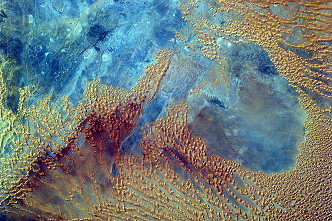 |
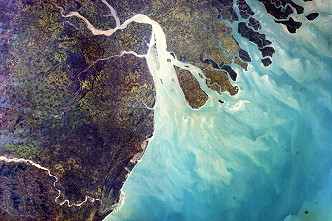 |
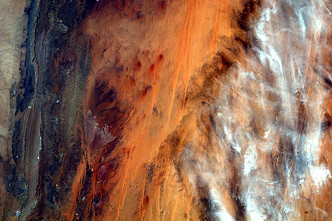 |
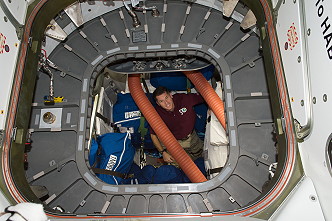 |
 |
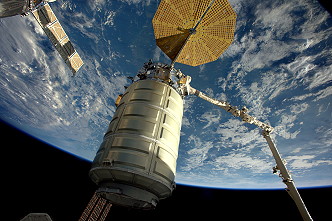 |
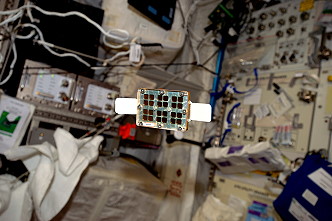 |
 |
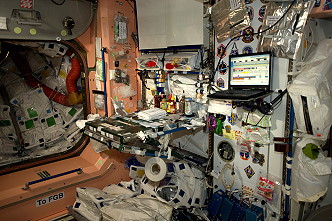 |
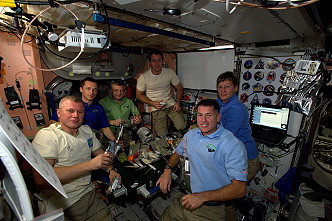 |
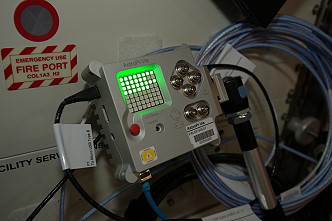 |
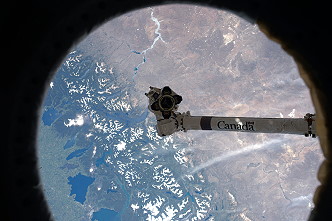 |
 |
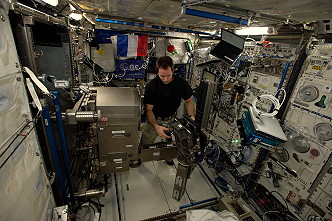 |
 |
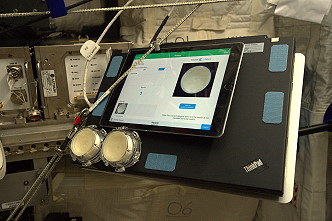 |
 |
 |
 |
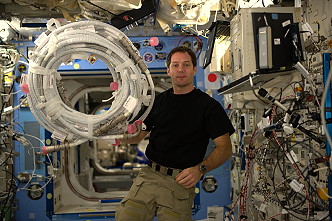 |
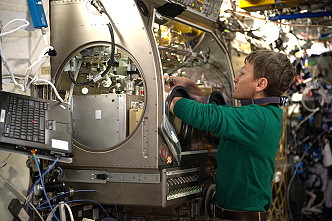 |
 |
 |
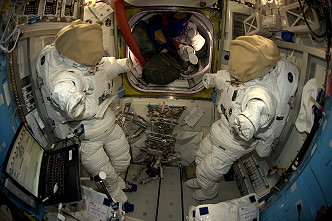 |
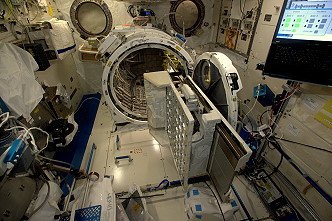 |
 |
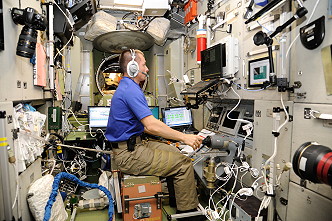 |
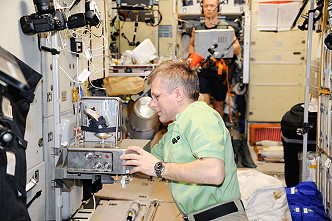 |
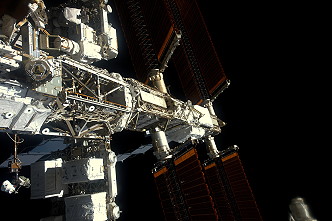 |
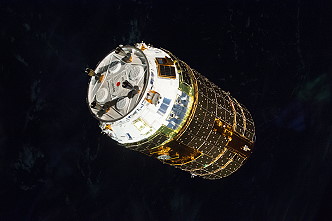 |
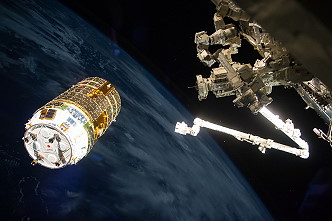 |
 |
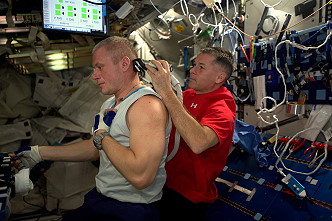 |
 |
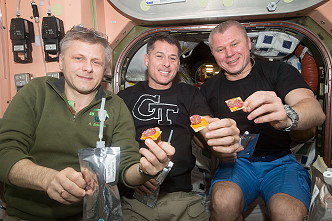 |
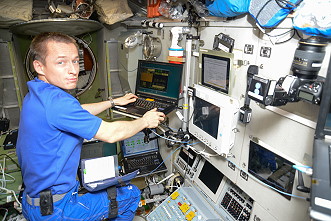 |
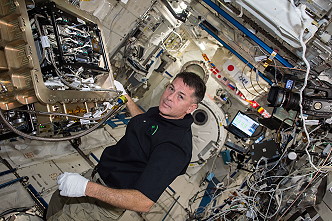 |
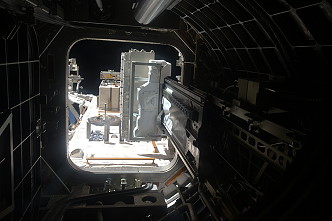 |
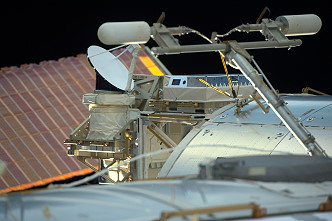 |
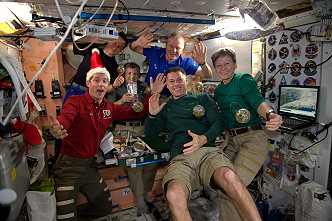 |
 |
 |
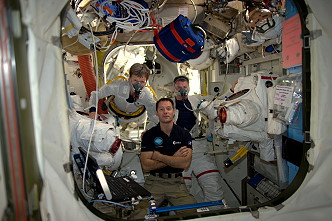 |
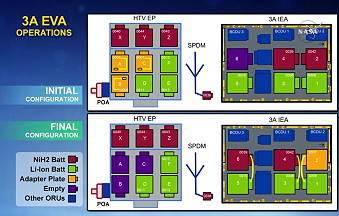 |
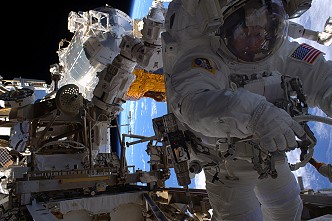 |
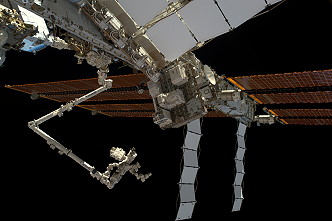 |
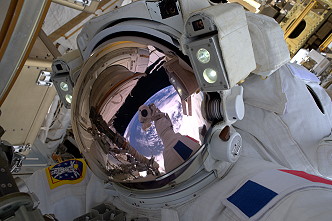 |
 |
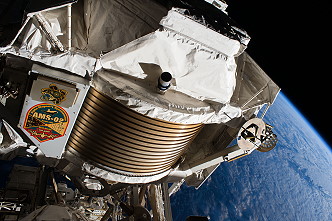 |
 |
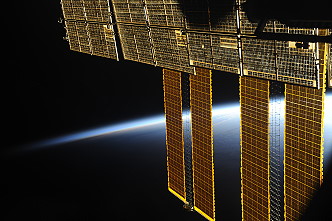 |
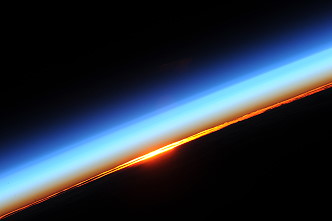 |
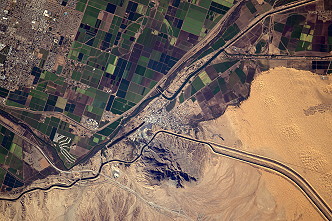 |
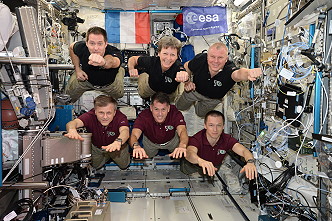 |
 |
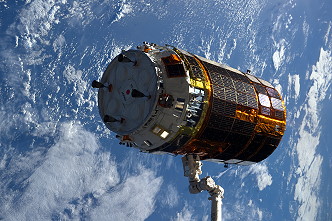 |
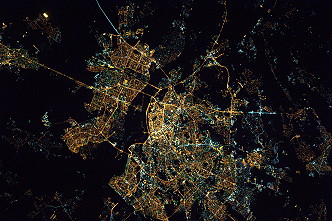 |
 |
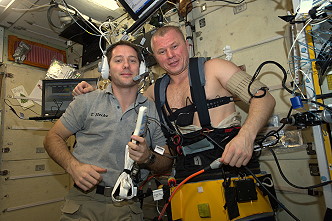 |
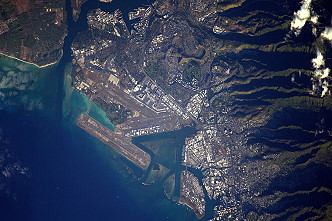 |
 |
 |
 |
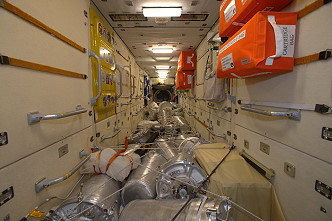 |
 |
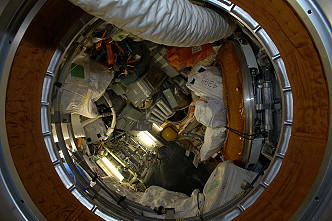 |
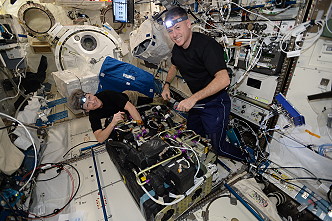 |
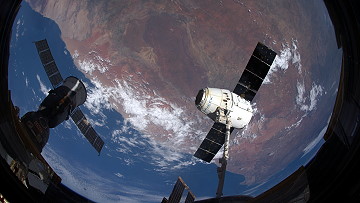 |
 |
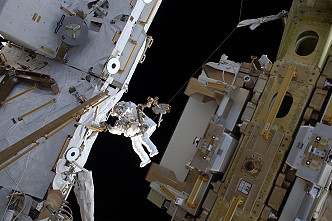 |
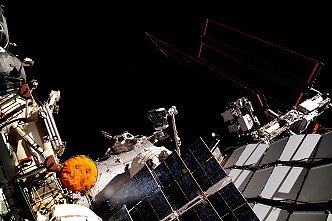 |
 |
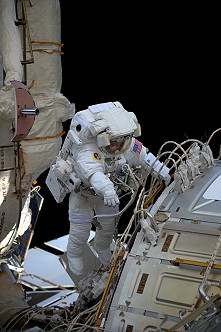 |
more Earth observation photos |
|
more EVA photos |
|
more night photos |
|
more onboard photos |
|
| © |  |
Last update on December 15, 2020.  |
 |